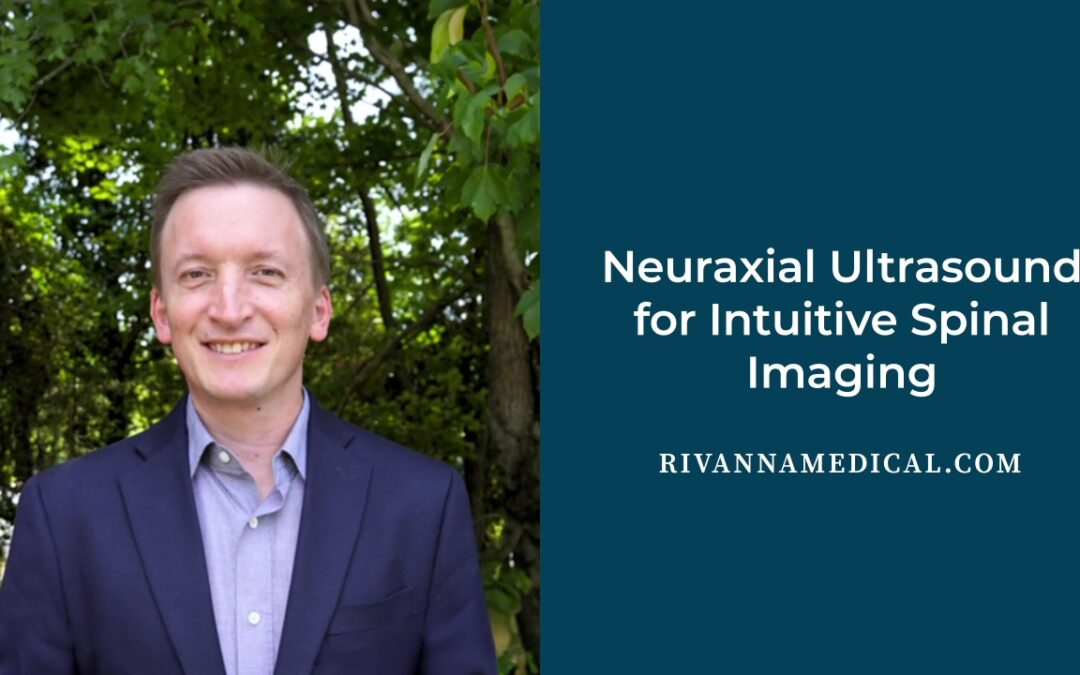For years, neuraxial ultrasound has promised to transform spinal access by offering real-time, image-guided precision. While its benefits are well documented, widespread adoption has been slowed by technical barriers and hesitation driven by usability limitations. RIVANNA’s latest development may shift that trajectory.
Reimagining Neuraxial Ultrasound
Paul Sheeran, Ph.D. — Director of R&D at RIVANNA — shares how a recent advancement, years in the making, is helping simplify one of the most technically demanding imaging challenges in anesthesiology. At the core of this innovation is a dual-array configuration engineered specifically for neuraxial ultrasound. This approach isn’t theoretical. It builds on a patented concept developed by Dr. Charles Kim, an interventional radiologist at Duke University, who licensed the technology exclusively to RIVANNA for clinical translation.
The dual-array setup is designed to provide a more intuitive, spine-specific view. In contrast to general-purpose ultrasound tools that rely on lateral interpretation or compromise on needle alignment, this configuration aligns more naturally with the anatomical and procedural realities of neuraxial access. The aim is to deliver images that clinicians can trust, especially when milliseconds and millimeters matter.
From Technical Vision to Neuraxial Ultrasound Utility
What sets this advancement apart is the convergence of real-world procedural needs and long-term R&D investment. At RIVANNA, we were exploring this path internally when we discovered Dr. Kim’s published work. The partnership allowed us to accelerate development, refine the design, and prepare the platform for commercialization.
This new iteration of neuraxial ultrasound prioritizes:
- A clear, midline-aligned view of spinal anatomy
- Enhanced image consistency to support confident, independent use across operators
- A more intuitive needle path that minimizes manual probe adjustments
These refinements have significant implications in settings where experience with neuraxial ultrasound is limited or where time and accuracy are critical.
What comes next in neuraxial ultrasound?
With licensing secured and development underway, RIVANNA is preparing to bring this platform to clinicians with the purpose of enabling greater confidence and clarity in spinal procedures. The technology reflects a strategic blend of internal innovation and external collaboration. We aim to redefine how neuraxial ultrasound is used in practice, thereby shaping the future of neuraxial anesthesia and patient care.
